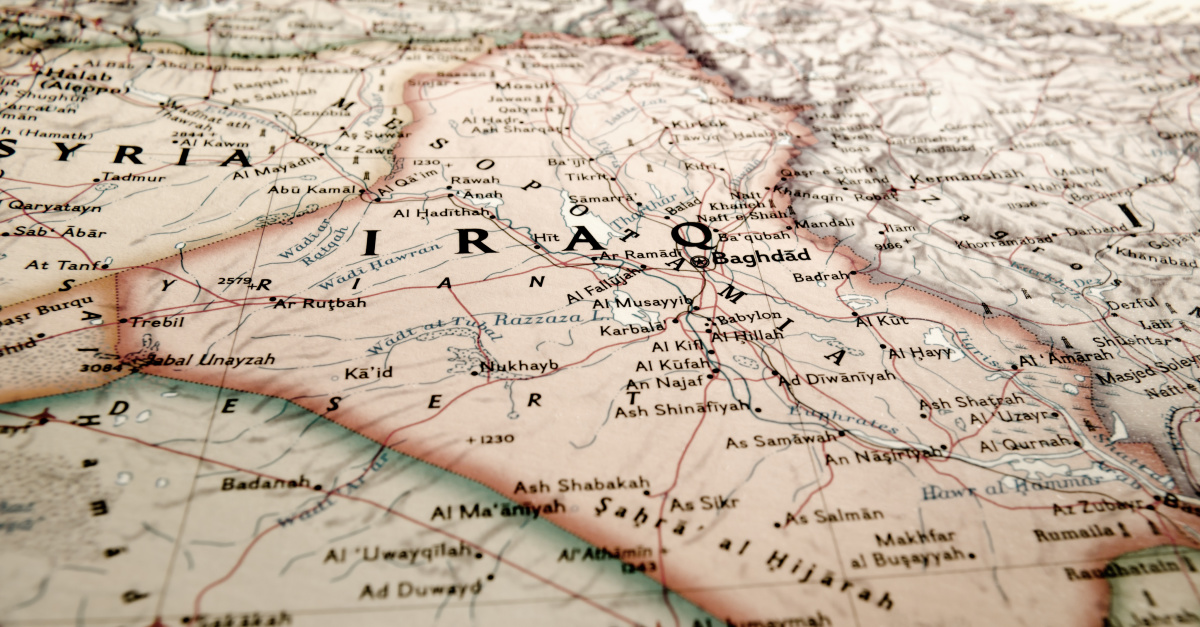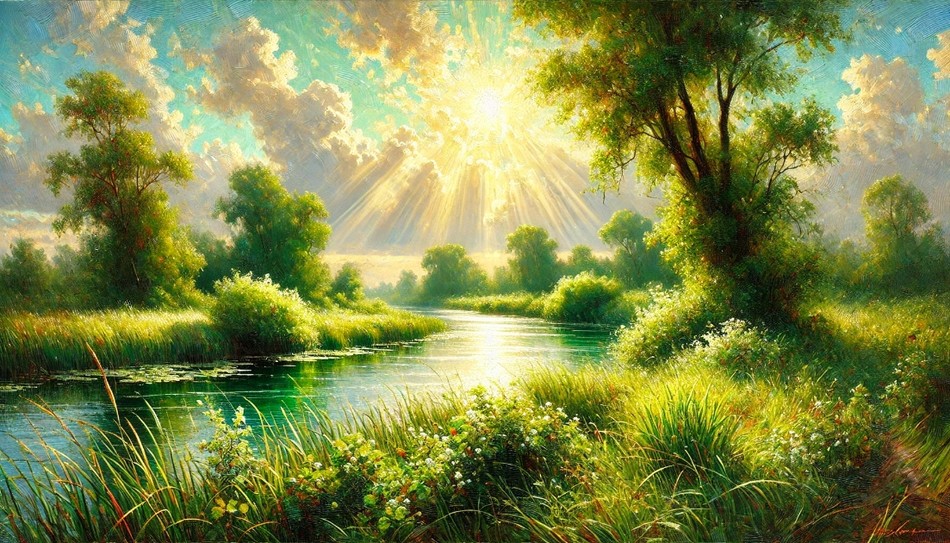What do you know about Mesopotamia and its role in the Bible? Geography in the Bible may seem relevant only to children’s church school classes, but digging into the actual dirt of the places where the events of the Bible happened can add richness and depth to any study.
In the Bible, Mesopotamia plays a significant role, as do the civilizations associated with this land wedged between two great rivers, the Tigris and the Euphrates. Understanding this geography, however, doesn’t just inform our understanding of times past, but also possibly, the present and times to come. Bible students who dismiss an understanding of basic biblical geography will surely miss out on an opportunity to fortify their faith with history, time, and place.
Mesopotamia plays a pivotal role in the Bible and honestly, in the history of every human—including you. Were you paying attention during that World History class in high school? If not, it’s never too late to learn about Mesopotamia, Bible history, and this region’s relevance, not only historically, but today and in generations to come. Even if this area of the world, also known as the “fertile crescent,” doesn’t appear on your DNA analysis, it is foundationally prominent on your spiritual family tree. While other areas of the world such as Egypt, China, Peru, Mexico, and the Indus Valley also had ancient civilizations, Mesopotamia is usually referred to as “the cradle of civilization.”
Where Was Ancient Mesopotamia?
According to worldatlas.com, “Mesopotamia is a term used to refer to a medieval region located on the banks of the Tigris and Euphrates Rivers, which now lies in the modern-day Middle East. The region corresponds to most parts of modern-day Iraq as well as parts of Iran, Kuwait, Syria, and Turkey. Mesopotamia is important in history for being the cradle of civilization as it was the site of significant developments throughout history.”
Mesopotamia also earns an early mention in the Bible. In a description of the Garden of Eden in Genesis 2:10-14, the writer describes a river that flows from Eden and divides into four rivers, Pishon, Gihon, Tigris, and Euphrates. Scholars have long speculated about the location of Eden, as well as Pishon and Gihon, but as of this writing, no scholars have determined its precise place. It would seem from Genesis 3:24 (ESV) that God’s intent was for us to not return, at least not through physical exploration and discovery since, “He drove out the man, and at the east of the garden of Eden he placed the cherubim and a flaming sword that turned every way to guard the way to the tree of life.”
We do know the banks of the other two rivers form crucial markers for ancient Mesopotamia in the Bible. In fact, Mesopotamia means “between two rivers.” In this area of the world, one which we often refer to as the Mid-East, people chose to live close to rivers, not only as sources of water, but also for the fertile soil along their banks, the easy transportation, and availability of trade opportunities.

Photo credit: ©Getty Images/Romanista
Significant Bible Figures from Mesopotamia
1. Noah
Noah is associated with Mesopotamia in the Bible. The biblical flood story has significant parallels with other ancient flood stories coming from this region, including the Babylonian Epic of Gilgamesh. If you’re not familiar with Noah’s story, told in Genesis 5-10, here is a brief summary: In the time span after God created the world and the fall of humanity through Adam and Eve, sin had grown rampant. People had become so wicked that it grieved God’s heart, and He was sorry He’d created them. Only one man walked in God’s ways, and that was Noah.
God decided to send a flood to destroy humanity and begin again with only Noah, Noah’s wife, their three sons, and their sons’ wives. He instructed Noah how to build an ark (a specially-designed ship) and to fill it with supplies and with animals of every kind. He closed up Noah and his family in the ark and sent rain for forty days and forty nights. When the waters receded, the ark came to rest in the mountains of Ararat (modern-day Türkiye). Eventually, Noah’s family emerged, and Noah erected an altar to God. God sent a rainbow as a sign that He would never again flood the earth, and Noah’s family began civilization again.
2. Nimrod and the Babylonians
Years later, their descendants again began to forget about God. The people of that time set about to build a tower, which became known as the Tower of Babel, described in Genesis 11:1-9. God wasn’t pleased that the people were building this structure (in a sense, cooperating so as to defy Him), and so He confused their language. Unable to understand one another, the people eventually parted ways and scattered over the earth. Babel is the root of the civilization known as the Babylonians. The Babylonians play a prominent role in the Old Testament. Nimrod, who was a great-grandson of Noah, and a “mighty hunter” is associated with leadership over the building of the Tower of Babel. Nimrod and his descendants likely created Babylon and other ancient civilizations in Mesopotamia, including the Assyrians.
3. Abraham and Lot
Abraham (and his father, Terah) and Lot are also associated with Mesopotamia in the Bible. Genesis 11:31-32 (ESV) reads, “Terah took Abram his son and Lot the son of Haran, his grandson, and Sarai his daughter-in-law, his son Abram's wife, and they went forth together from Ur of the Chaldeans to go into the land of Canaan, but when they came to Haran, they settled there. The days of Terah were 205 years, and Terah died in Haran.” God later changed Abram’s name to Abraham and he became the father of many, many nations. In fact, modern-day Christians, Jews, and Muslims all claim Abraham as significant to their faith, which is a reason why all these groups place significance on Mesopotamia.
How Does Mesopotamia Fit into God’s Plan?
Mesopotamia was the birthplace of many civilizations and Father Abraham’s descendants have a genetic connection to many of them. Through his wife, Sarai (Sarah), Abraham gave birth to Isaac, the child of promise. And from this line came the twelve tribes that would comprise the nation of Israel, settling eventually in the promised land.
It was such a long wait, however, for this promised child, that at one point, Sarah sent her Egyptian maidservant, Hagar, to Abraham to have a child for them as a surrogate. When Hagar became pregnant, she lorded her conception over Sarah, who then mistreated Hagar. When Hagar ran off into the wilderness, the God of Abraham spoke with her and promised that her son Ishmael’s descendants would also be so many that they could not be numbered.
Genesis 25:12-18 ESV lists twelve sons of Ishmael, “These are the generations of Ishmael, Abraham's son, whom Hagar the Egyptian, Sarah's servant, bore to Abraham. These are the names of the sons of Ishmael, named in the order of their birth: Nebaioth, the firstborn of Ishmael; and Kedar, Adbeel, Mibsam, Mishma, Dumah, Massa, Hadad, Tema, Jetur, Naphish, and Kedemah. These are the sons of Ishmael and these are their names, by their villages and by their encampments, twelve princes according to their tribes. (These are the years of the life of Ishmael: 137 years. He breathed his last and died, and was gathered to his people.) They settled from Havilah to Shur, which is opposite Egypt in the direction of Assyria.”
And after Sarah’s death, Abraham took another wife, Keturah, and had children with her and with concubines as mentioned in Genesis 25:1-6 (ESV), “Abraham took another wife, whose name was Keturah. She bore him Zimran, Jokshan, Medan, Midian, Ishbak, and Shuah. Jokshan fathered Sheba and Dedan. The sons of Dedan were Asshurim, Letushim, and Leummim. The sons of Midian were Ephah, Epher, Hanoch, Abida, and Eldaah. All these were the children of Keturah. Abraham gave all he had to Isaac. But to the sons of his concubines Abraham gave gifts, and while he was still living he sent them away from his son Isaac, eastward to the east country.”
Clearly, Abraham’s descendants did, indeed, “outnumber the stars.” All of this emerged from Mesopotamia. And from one line of his descendants: Isaac to Jacob to Judah—came the Messiah, Jesus, who would one day die for the sins of all humanity and rise again to life eternal.
Conclusion: Is Mesopotamia Still a Significant Place Today?
The eyes of the world are often focused on the modern-day cultures built on the foundations of ancient Mesopotamia. Currently, this region is the home of Iran, Iraq, Syria, Kuwait, and Türkiye. And, of course, their closest neighbors are Jordan, Lebanon, and Israel.
Will this area of the world be significant in end-times as prophesied throughout the Bible? Perhaps.
Revelation 9:14 mentions the drying up of the Euphrates River and Revelation 16:12 says that “kings from the East” will cross over the dried-up river bed. Certainly, Israel is mentioned as having significance in end times prophecy so it’s likely that the region once known as ancient Mesopotamia will play a role.
The specifics of this role are yet to be determined, but wise followers of Jesus will keep their eyes on God’s Word, their hearts attuned to His spirit, and their ears open for word from a land we nearly dismissed as having any significance in our lives back in those high school history classes—Mesopotamia. It was the birthplace of much of what we know of civilization. Will it be where the final battles of this civilization take place? Keep watch.
Image created using AI technology and subsequently edited and reviewed by our editorial team.





